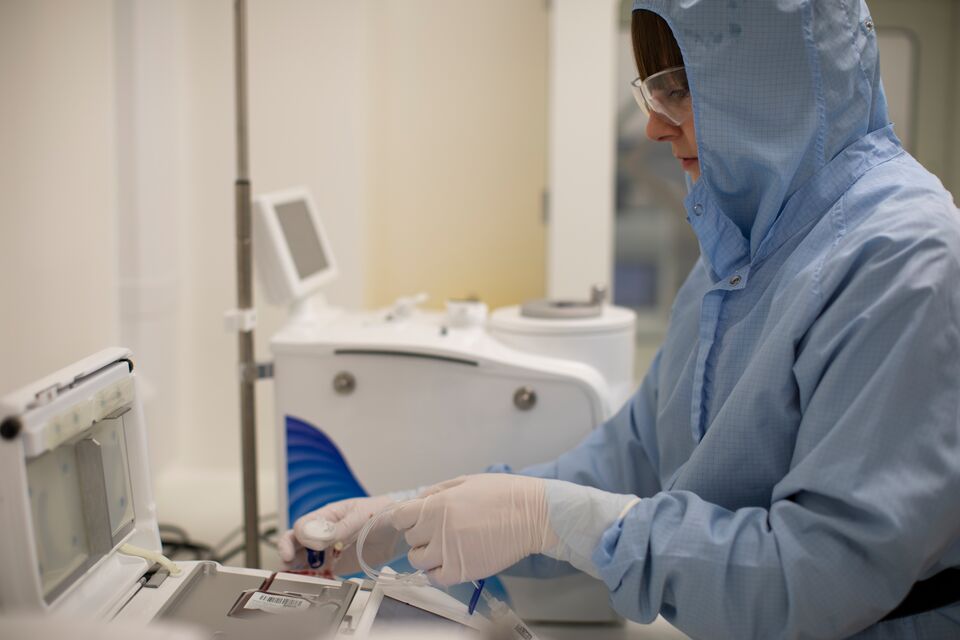In our latest blog, Science Communications Manager Dr Jonathan Kay, looks at a recent publication from researchers at the Anthony Nolan Cell Therapy Centre in Nottingham. It highlights a new way of predicting how suitable donated cord blood units will be for transplantation before they are processed, with the aim increasing efficiency and quality at our cord blood bank.
The stem cells in cord blood don’t need to be as well matched with a patient’s tissue type compared to other sources of stem cells, because they are not as mature as blood stem cells donated by adult volunteers. This means it can be easier to find a suitable cord match for patients in need of a transplant who don’t have a suitable related or unrelated matched donor.
How does Anthony Nolan prepare cord cells for transplant?
Anthony Nolan collects cord blood donations from new mums at five hospitals around the UK - our cord blood bank contains approximately 10,000 donated samples. Unlike adult stem cells, cord blood units need to be processed, cryopreserved (frozen) and stored until needed, potentially many years later. During processing, unwanted red blood cells and plasma cells are removed from the cord unit, but this can cause stem cells to be lost too. This means that some units that seemed suitable when first collected, can’t actually be used for transplants. Due to the substantial financial costs associated with storing cord units, it’s vitally important that we only commit to processing units of the highest quality, that are more likely to be used to save a life.
When a patient’s doctor decides to use a cord unit, they are more likely to pick one with a higher number of total nucleated cells (TNC) and blood stem cells. This is because both features have been linked to improved patient survival and quicker development of the immune system after transplant. However, it’s not always easy to predict how many cells will be lost during processing and freezing when the cord is first donated, which means limited resources are sometimes used on units that are then never selected.
Although the number of TNCs and stem cells pre-processing have previously been used to select cord units for storing, our researchers at the Anthony Nolan Cell Therapy Centre believed a more reliable prediction method could be created using a range of measurable characteristics. This would ultimately make the process more efficient and allow the charity’s resources to be put to better use.
What did the study involve?
Based on post-processing cell numbers, over 1,000 cord units were assigned a quality score. Unsurprisingly, units with the highest score were most likely to be selected for clinical use. These units represented just 5% of processing costs but provided nearly 30% of all selected units, while those with the lowest score only provided 11% of selected units but accounted for 37% of processing costs. Overall, 133 low score units had to be processed for every selected unit compared to just seven for those with the highest score.
To help us focus our limited resources on processing only the high-quality cord units that are most likely to be used, our researchers developed a new predictive modelling tool that used eight factors including red blood cell count, cord unit volume and the time from collection, as well as total counts of various other blood cell types. When compared to the established TNC and stem cell number selection methods, this new model was significantly better at distinguishing which units would eventually be placed in the lowest scoring group after processing.
What impact will the research have?
This new approach to selecting which cord blood units should undergo processing and freezing to be stored will allow Anthony Nolan to build a larger reserve of high-quality cord units that is available for clinical use. It will come at no extra cost to implement and will reduce the amount of money and resources used to process low quality units.
Further work is needed to see if this new technique can improve the outcomes for patients who receive these cord transplants. In the meantime, the money saved can be reallocated by Anthony Nolan to help save and improve the lives of more patients. It’s also hoped that other cord blood banks around the world will adopt our new selection method to make similar savings and improvements in the future.
More information on the research currently underway to improve every step of the stem cell transplant journey is available in Our Research section.
